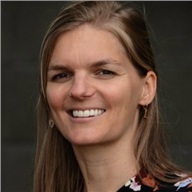There is a growing requirement for space for residential and commercial activities as a result of the constant growth of the population and the economy. If an adapted policy is not in place, this will result in a continued increase in the built-up areas. New buildings influence different environmental aspects such as: disintegration, air quality, water quality, green space and use of natural resources. Inefficient land use takes its toll on the management of provisions, but also puts the brakes on the development of existing and new open space functions such as food supply, water buffering, generation of renewable energy, etc. The processes that control the changes in spatial use are, however, complex and strongly interlinked.
Gaining insight into the way in which they have an impact in terms of time and space and obtaining a better grasp of this requires advanced instruments that have only been developed and become available in the last few decades.
In 2007, VITO began working on developing a spatially dynamic land use model in collaboration with Founding Fathers with the aim of mapping the existing situation and possible developments in changing land use in Flanders as accurately as possible, and at a high resolution of 1 ha, in the form of time series of land use maps and spatial indicators derived from land use.
The Spatial Model differentiates between 40 land use classes here. It takes into consideration annual time steps for periods of up to 50 years in the future and provides cartographic and other quantitative output for each year. A tangible example of the output can be seen in the online Indicator atlas that was drawn up within the scope of the 2030 Milieu- en Natuurverkenning [Environment and Nature Study].
The Spatial Model Flanders is currently used by various parties within the Flemish government, including Ruimte Vlaanderen [Flanders Planning], VMM [Flanders Environment Agency], INBO [Research Institute Nature and Forest], VREG [Flemish Regulator for Electricity and Gas], VLM [Flemish Land Agency], LNE [Environment, Nature and Energy Department], ANB [Agency for Nature and Forests], OVAM [Public Waste Agency of Flanders], Flanders Innovation and Entrepreneurship and VVC [Association of Flemish Culture Centres], provinces, in particular the province of Limburg and cities, including Ghent.


